Morsels Articles
By Topic
Apples
Bees
Community Supported Agriculture
Composting
Worm Tea
Farmers Market
Gardening Community Garden
Starting Seeds
Seeds
CNC Courses
Herbs
Fresh
NVFN
Recipes
Winter Squash and Garlic
Salmon
Wheat
Morsels
Morsel articles are fun little articles about local initiatives in our area, gardening and food facts, tips, and suggestions for all things related to producing food for others or for ourselves. If you have an interesting idea for an article that you'd like to share, please email us!
5 Reasons to Preserve your own Food!
Eat from known local food sources year round!
Fill your cupboards with foods free from chemical additives or preservatives.
Lock in peak flavors and nutrition by preserving the bounty of the season
Taste the flavors of homemade: store bought brands just can’t compare
Preserve foods while they’re plentiful, and the benefits last all year with tastes you won’t soon forget!
www.heraldpress.com
Consider: Canning, Freezing, Drying or storing in a cold room or root cellar
Vanderhoof Community Garden Grows Again!
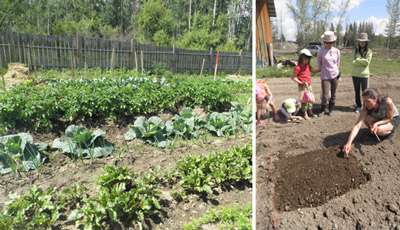
Location: Vanderhoof Community Museum
In 2011 we planted 24 plots each 15 x 15 feet, and 7 community shared plots. There is still room to grow, so we look forward to next year and dividing up the garden for the community to use.
All interested families, individuals, or groups of all gardening experience levels can have 1 or more plots for free. Experienced gardeners are available to help beginner gardeners. And this season lots of seed and plant starts were donated by people in the community.
This year we had seven plots planted for community use. The intend of the community shared plots is for anyone from the community to come and participate in the preparation, seeding, weeding, and maintenance of the garden. The community is then welcome to share in the harvest. This garden is good for those who don't have enough time or resources to care for their own plot, but what to be involved in the process when they can.
This year the community plots are marked with a tall stake painted red at the tip. You can also see the layout of the entire community garden from the map on the bulletin board next to the garden.
Plans for this fall and next year:
1: Erect large greenhouse for use next spring
2: Complete fencing
3: Build tool shed
4: Purchase tools and rotor tiller
5: Continue building soil with organic matter
To become part of the community garden or to help support this initiative, please call:
Maya at 250-570-2194 or email bytes@nvfoodnetwork.ca
Starting Your Seeds Indoors
Starting Vegetable Seeds – Beginning of April is generally the best time to give your vegetables a head start.
Steps to Starting Your Seeds Indoors:
1. Prepare set up locations near to sunny windows in your house gather suitable containers. Containers must be clean and have drainage.
These are just a few possible ideas for containers:
- shallow wooden boxes with slats spaced 1/8 inch apart for drainage
- clay flower pots a layer of broken pottery or small pebbles placed in the bottom to permit drainage and prevent soil leakage
- yogurt or similar containers with holes punched in the bottom for drainage
- Egg cartons punch several holes in the bottom of each
compartment and use the lid as the drainage tray underneath the container
Prepare Containers
- scrub containers with mixture 9 parts water/1 part bleach to avoid disease
- create drainage holes then, line bottom with clean newspaper to prevent loss of growing medium
2. Prepare Growing Medium: The medium should be thoroughly damp but not wet.
3. Fill Container and firm soil.
4. Plant seed and cover with growing medium.
5. Label Containers and create Mini Greenhouses for your seeds. Place each container inside a plastic bag and secure the bag to keep the air out but still allow easy access for watering.
6 Move the container to either a bright or dark location depending on the needs of the seed for germination. Water by gently misting the soil surface from above.
7. Once seeds have sprouted, move to a bright location but not one with strong sunlight as plants may receive too much heat in relation to light.
For more details on this process, please read From Seed to Bloom by Eileen Powell.
Reasons to Choose Rabbit Meat
According to the US Department of Agriculture's extensive tests:
1. Domestic rabbit meat is the most nutritious meat known to
humans
2. Rabbit is lower in % fat than chicken, turkey, beef, and pork and rabbit meat have the highest % in protein.
3. Unsaturated fatty acids account for 63 % of the total fatty acids in rabbit meat.
4. Rabbit has 795 calories per pound while chicken has 810,
veal 840, turkey 1190, lamb 1420, beef 1440, and pork
2050.
5. Rabbit meat is all-white meat.
6. A doe rabbit that weighs 10 pounds can produce 320
pounds of meat in a year. This is more than a cow and it takes two acres of land to raise a cow.
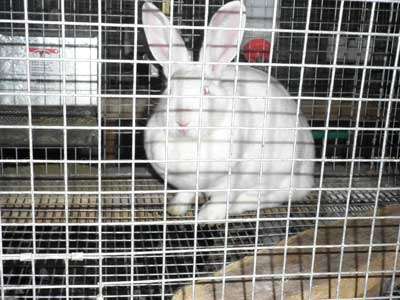
Vanderhoof Farmers Market
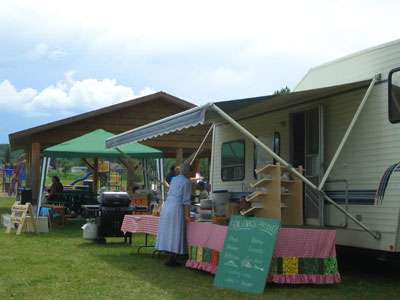 Vanderhoof Farmer's Market is Back
Vanderhoof Farmer's Market is Back
11 AM - 3 PM
Riverside Park
Every Thursday
Until September
Fresh Produce Hot Sausage on a Bun or Hamburger Fresh Juices Homemade Pie and Salads Home Preserves Plants Rustic Planters and Furniture Local Honey and Beeswax Candles and jewelry boxes Grass fed Beef (Stew Meat, Hamburger, Roasts, and more) Natural Skincare and Bodycare products Home baking Bread Local Grown and Ground Whole Wheat Fancy Cupcakes Cloth Diapers Granola -
Enjoy the Festival Atmosphere! See you there!
Bee ID
There are roughly 3000 species of bees in the world. The honeybee is the most complex and important bee of them all. Below are some fun facts about bees and other critters.
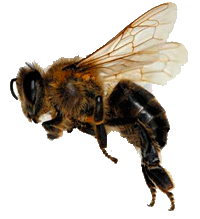 Honeybees
Honeybees
- form complex societies that communicate by dancing
- 1 queen and up to 100,000 workers in one hive
- honeybees pollinate $4.4-billion worth of food a year in Canada and the US including melons, gourds, pears, plums, peaches, almonds, sunflowers, canola, lettuce, broccoli, coffee, alfalfa, clover, and cotton
- colonies in Canada and the US declined by 29% in 2009
- pesticides, herbicides, fungicides, and miticides, negatively affect honeybee and honeybee hive health
Bubble Bees
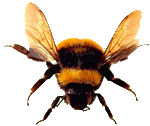
- weigh 0.5 g (2.5 times a honeybee)
- 60 species in NA
- proficient pollinators of sunflowers, canola, rapeseed, lentils, peas, tomatoes, chilies, red clover and alfalfa
- can fly 11-20 km/hr and travel up to 6 km from the nest
- can sting multiple times when threatened
Wasps
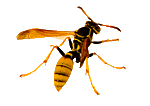 Mistaken identity! Bees are often mistaken for wasps and vise versa, yet ‘wasp’ is a general term for parasitic insects that are not bees. Hornets and yellow jackets are species of wasp. Although they are thought of as pests, wasps prey on pest insects and play an important role in pest insect control.
Mistaken identity! Bees are often mistaken for wasps and vise versa, yet ‘wasp’ is a general term for parasitic insects that are not bees. Hornets and yellow jackets are species of wasp. Although they are thought of as pests, wasps prey on pest insects and play an important role in pest insect control.
For more info on bees, go to these useful sites.
www.agf.gov.bc.ca/apiculture
www.bcbeekeepers.com
www.beeswithoutborders.org
www.pollinator.org
Worm Tea: Composting Magic!
Worm tea is worm castings that have been soaked in water and oxygenated. The extra oxygen causes a bloom of the good bacteria, plus the added benefit of nitrogen, phosphate, calcium, magnesium, and potash. The liquid that drains out of a worm composting bin is leachate. Leachate contains solids and some potentially harmful bacteria. However, it can be aerated as described below and used.
Some of the benefits of the tea include:
- a natural repellent for scale, mites, whiteflies, and aphids
- a natural fungicide in soil and on plant surfaces
- increase in plant stem size and foliage
- acts as a soil conditioner
- will not burn plants
- creates healthy soil for healthy plants
- aides in the creation of colloidal humus
- grows healthier fruits and vegetables than those treated with chemical fertilizers
- improves water retention in soil
- reduces the amount of waste going to the landfill, because worms eat our garbage
Tea can be purchased from an organic supplier or you can make it yourself. To make your own tea, you will need:
- 5-gallon bucket
- tap water
- 3-5 handfuls of worm castings in a permeable bag, or not
- rough tablespoon of molasses
- aquarium air pump and bubbler
Instructions:
- fill the bucket 3/4 of the way with tap water
- insert the bubbler and let the water aerate for a couple of hours to remove chlorine
- add castings
- add molasses
- let bubble for another 24 hours
Your tea is now ready for use.
Since the tea is alive and full of microbes, it has a shelf life. The quicker you use it, the greater the benefit. It can always be re-aerated using the instructions above.
If your tea stinks, it has gone bad, and don't use it.
The most common way to use the tea is to put it in a hand sprayer and spray your plants with it. You can even spray the lawn. Aerated tea will not burn your plants, and it helps repel certain insects.
Think of worm tea as a natural immune system booster for plants. It provides good microorganisms and nutrients needed for plants and soil to repel insects and disease.
You can also water your plants with it. It's great for seedlings since it provides nutrients but absolutely will not burn.
Source: www.organic-raised-bed-gardening.com
According to Bentley, at redwormcomposting.com, you can feed tea to your worms. Soak cardboard in the tea and then place it in the worm bin. This gives the worms bacteria to feed on. Nice!
Salmon Stocks in Crisis
The summer of 2009 marked perhaps the worst year on record for sockeye salmon returns in the Fraser River, including the Nechako runs. Only about 7% of the 8.7 million sockeye salmon that were expected survived to return.
Salmon face a multitude of challenges:
-water quality, quantity and temperature issues
-deforestation and habitat loss
-hydroelectric dams
-decreases in ocean survival rates
-climate change
-overfishing
-sea lice infestation from salmon farms
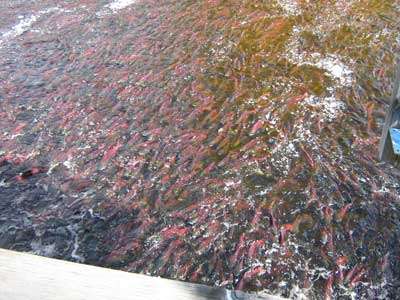
There are still salmon runs in this area, but they are a far cry from what they have been and are in danger of being lost altogether. On November 5th, 2009, after lengthy petitioning by many concerned organizations, and under significant political pressure, the federal government announced a federal inquiry into the decline of the Fraser River salmon stocks.
Salmon are an integral part of our northern ecosystem. Their decline is a great loss on many levels. You can find out more about this complicated issue, and also find out ways you can help at the following sites.
http://www.adopt-a-fry.org/?page_id=21
http://www.pm.gc.ca/eng/media.html?id=2951
http://www.friendsofwildsalmon.ca/
http://www.sierraclub.bc.ca/campaign-spotlights/save-bc-salmon/?searchterm=salmon
www.seachoice.org
If you are interested in trying to help salmon on a local level, contact bytes@nvfoodnetwork.ca
~Contributed by M.Sullivan
Fresh the Movie

FRESH celebrates the farmers, thinkers, and business people across America who are re-inventing our food system.
This movie is uplifting and hopeful, featuring real people who are forging healthier, sustainable alternatives to industrial agriculture. They offer a practical vision for the future of our food and our planet.
A Home Grown Holiday
Tasty winter squash and garlic recipe that is sure to spice up your holiday feast. This holiday season, we encourage you to prepare your meals with locally grown produce and meats. For a list of producers and products available in our area, view our
~Cut the squash in half, vertically with a large knife. If you are using a large squash, you may need to quarter it.
~Scoop out the seeds. You can save these to bake later.
~Spread the exposed flesh with olive oil. Place the cut side down on a baking sheet.
~Bake in a preheated oven at 400°F for 30-45 minutes depending on the size of the squash.
~The flesh should be easily pierced with a fork.
~ Cut off the top of a garlic bulb.
~Pour a bit of olive oil into over the exposed cloves and wrap the bulb in tinfoil.
~Cook at 400°F for 20 - 30 minutes until the cloves are soft and a sweet, garlicky aroma wafts from the oven (check periodically).
~1 Winter squash, roasted
~1 bulb of garlic, roasted
~2 tablespoons of butter or olive oil (amount depending on the size of squash)
~Salt and Pepper to taste
Scoop out the flesh from the cooked squash and put it in a bowl. Add butter or olive oil, salt, and pepper. Squeeze the roasted garlic from its skin and add to the squash. Mash with a potato masher. Sometimes the squash skin is edible after roasting and can be mashed along with the rest of the squash.
ENJOY!
**You can purchase locally grown garlic from BearFoot Acres 250-567-2125.**
A Check-in with Local Wheat Growers
Telephone interview with George Labrash:
Unfortunately, George was unable to produce wheat this season as the weather did not cooperate. However; he planted a small sample plot last season, which produced around 5 kilos of wheat. He was very impressed with the success of the season when his findings added up to 80 bushels of wheat per acre. One of George’s objectives is to determine which types of wheat cope well in northern BC, as you must have 88 days of frost-free weather to successfully grow a wheat crop.
Telephone Interview with Gary & Judy Blattner:
The Blattners had anticipated to carry out an experiment with their wheat crops where they would be planting different strains of wheat in four by four plots, but their experiment could not be completed as their family dogs dug them up. However; Garry and Judy have decided to rise to the challenge next season in hopes of a more successful outcome. To make this possible, they plan to plant bigger plots and allow for more test spaces.
Freezing Herbs
Steps are taken from eHow.
Step 1
Most herbs are simple to freeze. Smaller plants like thyme can be frozen on the stem, and basil will need to be blanched or else they will turn black when frozen. Other herbs will not have to be blanched before freezing
Step 2
Spread herbs either chopped up or whole flat on a baking sheet and then put in the freezer. When frozen use a large freezer bag to collect them, marking the outside of the bag with the name of the herb so it is easier to select for use later.
Step 3
Frozen herbs are easier to use in soups and cooked dishes, but if you want to use them in salads then you will need to thaw them out first and then pat them dry. They should come out just like their fresh counterparts.
Step 4
Herbs can be frozen in a puree as well. Take the herbs and blend them with just enough water to make a paste-like semi-liquid. Pour into an ice-cube tray and freeze. You can keep these in freezer bags just like the normal herbs, and later use them in soups and stews with ease.
Step 5
Frozen herbs can be used as a garnish. Thaw first and pat them dry. Arranging them will be a little harder as they will not have the stiffness of fresh herbs.
Types of Apples that Should Grow Well Here
In Vanderhoof, we are in Zone 3. Be aware that just because a plant is labeled as hardy to zone 3 does not mean it will produce. It only means it shouldn't die.
Fruit trees are more challenging to grow in cold climates; however, there are prairie hardy varieties available that are suitable for the cooler, shorter growing areas of BC.
 Most fruit trees are propagated by grafting a scion or top part of the tree, onto a rootstock which becomes the root and crown part of the tree. The rootstock has an influence on the size and hardiness of the tree, but the scion determines the type of fruit produced. It is important both the rootstock and scion are winter hardy.
Most fruit trees are propagated by grafting a scion or top part of the tree, onto a rootstock which becomes the root and crown part of the tree. The rootstock has an influence on the size and hardiness of the tree, but the scion determines the type of fruit produced. It is important both the rootstock and scion are winter hardy.
The Government of Canada website suggests these 3 varieties for our area:
Haralson apple: medium-sized fruit. Red striped to deep red. Crisp, juicy, firm. Good for fresh eating and juice. Excellent for baking. Stores for 4-6 months. The tree is biennial [heavy crop followed by a light crop]. Ripens in Sept-Oct.
Honeycrisp: a cross of Macoun and Honeygold. Skin is mottled red over yellow ground cover. The flesh is very crisp. Excellent quality. Better than McIntosh or Red Delicious for fresh eating. Ripens in late September. The tree is an annual bearer.
Sunnybrook: fruit ripens in late August. The fruit is medium-sized. Good for pies.
NuGrowth and Maxine's Nursery in Vanderhoof both have a variety of apple trees including Fall Red, Honeycrisp, Goodland, and Parkland.
Art Knapps in PG has Battleford [good for cooking], Goodland [great for storing, eating and cooking], Parkland [similar to Spartan], September Ruby, Honeycrisp, Fall Red [similar to a Gala], Norland [doesn’t store well], plus more.
Take control of your food source!
Get going on a vegetable garden. No matter how small your plot of ground, it is a start! And a smart way to start is with the right seeds. These are just two possible sources. Check out these websites.
http://www.saltspringseeds.com/
http://www.westcoastseeds.com/product/Vegetable-Seeds/
NV Food Network Community Meeting "Growing Together"
 In 2009, the NV Food Network held a community discussion of local food issues. Facilitated by Dr. Theresa Healy
In 2009, the NV Food Network held a community discussion of local food issues. Facilitated by Dr. Theresa Healy
(Regional Facilitator for BC Healthy Communities) with Ms. Christine Glennie -Visser HEAL North Regional Coordinator (Healthy Eating and Active Living). Monday, January 12th, 7- 9:30 PM, Vanderhoof Public Library. Everyone Welcome!
SUMMARY OF MEETING: Ranchers, farmers, consumers, gardening enthusiasts, and educators gathered to discuss local food issues. There was a tremendous turn-out of over sixty people for a standing room only meeting in the Vanderhoof Public Library Meeting Room. The NV Food Network also presented our goals and some of the tools we are developing to assist the growth and distribution of local agricultural products. The NV Food Network offered to continue to host community planning sessions with Dr. Theresa Healy and also to start work on a volunteer database for community food projects. A Community Action Report will be distributed through email by the Network which will summarize the ideals, barriers, and actions which the community identified for developing the local food 'scene'. The next community planning workshop will be on February 2. So, get ready to keep the planning momentum going!
"Growing Together" Agenda
Welcome, Introduction, and Purpose
Opening Round: who you are and what is your dream for the community
Nechako Valley Food Network Briefing Panel Presentations
1. Why Buy Local? the challenges and joys of buying local
2. Supporting Community Supported Agriculture. linking local farmers and
local consumers
3. Linking Ourselves. the technology that can improve our efforts
4. Virtual and Real Websites. the elements of communication
5. Growing Together. using the tools to unite our efforts
Break
Traffic Lights Workshop
Small groups: what are the barriers, ideal states, solutions?
Facilitator: Strategic Directions and Tasks
For Background Information:
Available on The Bean Bookshelf, download it from here.
A Seat At the Table: Resource Guide for Local Governments to Promote Food Secure Communities
Community Food Assessment Guide
Making the Connection: Food Security and Public Health
Community Supported Agriculture
Customers 'subscribe' to a farm by buying a share of a farm's harvest, paying either at the beginning of the season or at a set weekly price.
Customers
- buy bins of fresh, locally grown produce each week throughout the harvest season
- offer your family ripe, in-season, nutrient and vitamin-rich fruits and vegetables
- feed your family naturally raised, free-range, grass-fed beef, pork, lamb, and goat meat
- buy other farm products such as fresh eggs, local honey, and flowers
- use your spending power to support local farmers and your community
- make a positive impact on the environment by buying local produce without packaging
Producers
- a guaranteed market for your produce
- funds available at the beginning of the season when costs are high
- contribute to the health and self-reliance of your community
- encourage biodiversity and good land stewardship by growing food for customers who have a vested interest in your farm
Help make Community Supported Agriculture a reality for Spring - Fall 2009 in the Nechako Valley! Experienced mentorship is available for interested producers.